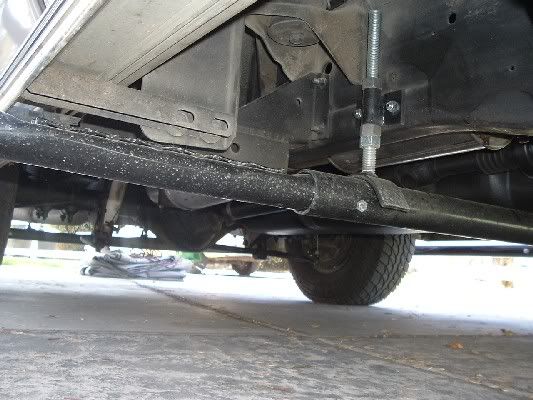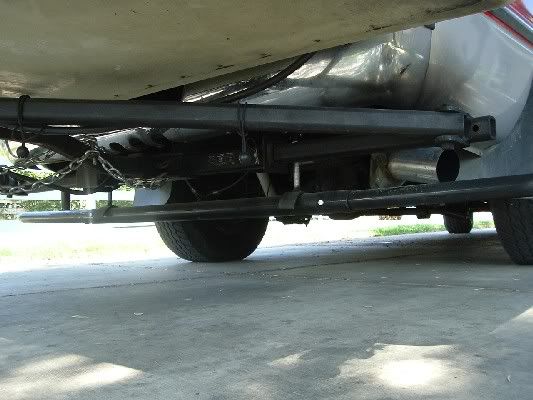You understand correctly. As I am sure you are aware, when you raise the lift up and the hoop contacts the saddles (the half round pieces), the lift will sandwhich the truck bed and frame between the TC and lift hoop. This replaces the tie-downs of the typical TC. If the sandwhich is too tight, you are correct it applies to much down force on the bolts/wings. Like the typical tie-downs, if too tight, it will put constant stress on the TC.
The photo below shows one of the saddle (the half round pieces). All four are identical. They are made up of a piece of 3/4" course threaded rod, with a 2" piece of strap welded to the rod. The strap about 1/8" thick, and bent on an oval shape. It is bolted to the frame with a bracket made of a loose fitting piece welded to a plate (about 1/8" thick). It bolts to the frame through the plate, with two 5/16" bolts per bracket. Each of the saddle rods use three 3/4" nuts, two at the bottom and one at the top. As you can see, there are many ways to fabricate the saddles.

To adjust my lift with the 1/2" to 3/4" pre-load, I raise the hoop to the height I want it. On my truck, the fuel tank is the first thing the hoop touches. I position the hoop about 1/2" below the fuel tank. With the saddles in place, and the 3/4" nuts loose, I let the Saddles drop in place on top of the hoop. I adjust the top 3/4" nut between 1/2" and 3/4" above the top of mount plate pipe. This allows the Saddles to drop down between 1/2" and 3/4", when I lower the hoop. I will tighten the other 3/4" nuts against the bottom of the mount plate pipe.
You have several mounting holes in mounting the jacks to the Stable Lift frame. I use the holes that leaves the least amount of the jack extended when in the up position.
I sure hope I typed this correctly. If you question something, let me know so I can clarify or correct.
Wayne

